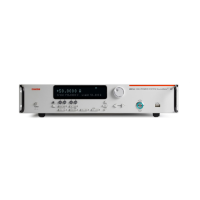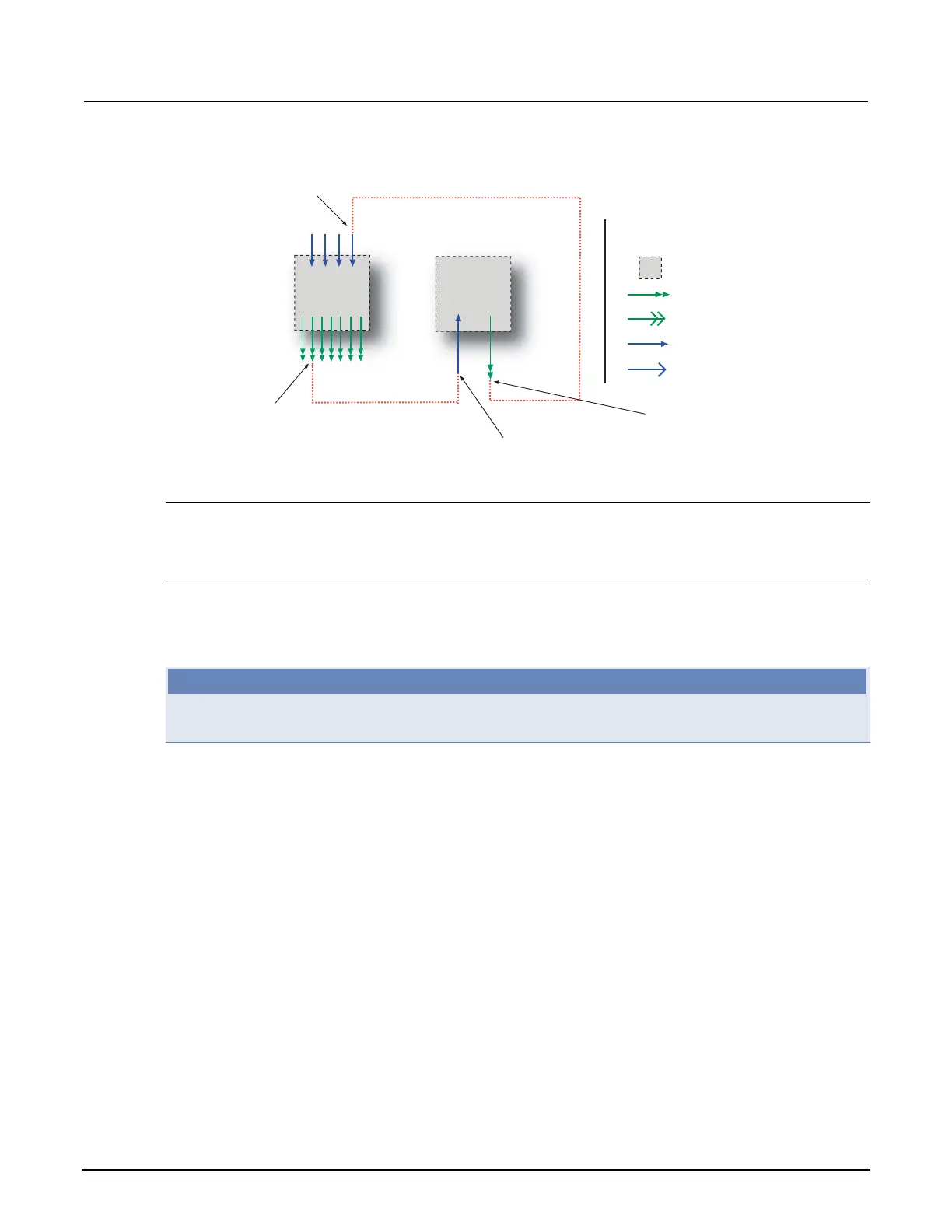Model 2651A High Power System SourceMeter® Instrument Reference Manual Section 3: Functions and features
2651A-901-01 Rev. A / March 2011 3-45
Figure 48: Using a timer for an SDM cycle
Stimulus input:
trigger.timer[1].stimulus
SMU A
Timer
#1
Trigger event:
smua.trigger.SOURCE_COMPLETE_EVENT_ID
Trigger event:
trigger.timer[1].EVENT_ID
Stimulus input:
smua.trigger.measure.stimulus
Legend:
= Trigger object
= External input trigger
= External output trigger
= Trigger events
= Stimulus input
Timer action overruns
The timer generates an action overrun when it is triggered while a timer delay is still in progress.
Using timers to perform pulse mode sweeps
Timers can also be used to control the pulse width during a pulsed sweep. To create a pulse train, a
second timer must be used to configure the pulse period. The examples below show a single pulse
output and a pulse train output.
NOTE
The SMU end pulse action smua.trigger.endpulse.action must be set to
smua.SOURCE_IDLE in order to create a pulse.
Single pulse example:
The programming example below illustrates how to use a single timer to control the pulse width of a
single-shot pulse measurement. The programming example configures the timer and SMU as follows:
Timer 1: Pulse width timer
• Set the delay attribute of a timer equal to the desired pulse width.
• Configure the timer to trigger when the SMU moves out of the arm layer of the trigger model.
• Assign the trigger event generated by the timer to the stimulus input of the SMU end pulse event
detector.

